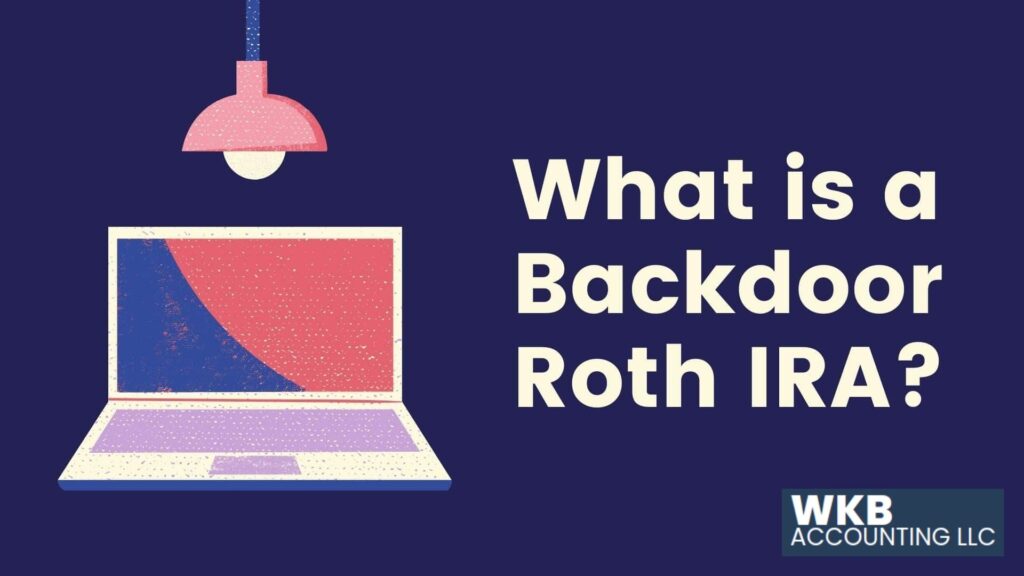Understanding The Backdoor Roth IRA
Many savvy people agree that the Roth IRA is the best thing to come out of Washington in a long time. But unfortunately, if your income is too high, you will not be eligible to make meaningful contributions. Or can you? Yes, you can still gain access to the Roth IRA, but you’ll have to enter through the backdoor. For the purposes of this article, we will delineate the basic rules and the mechanics of the “backdoor” Roth IRA.

The basics
In the past, if your income was too high, you could neither contribute to a Roth IRA nor convert a traditional IRA to a Roth IRA. The laws changed in 2010 so that anyone, regardless of their income, can do a Roth IRA conversion. But there are still income eligibility requirements for Roth IRA contributions. High-income earners have long had the option to contribute to a non-deductible IRA and enjoy tax-deferred growth; it’s just that they cannot deduct those contributions from their gross earnings or convert the non-deductible IRA to a Roth IRA. The 2010 rule change means that now those high-income earners can convert non-deductible IRAs into Roth IRAs. Of course, with any rules out of Washington, you must read the fine print very carefully; otherwise, you could find yourself owing much more tax than you realized. Here are a couple of examples of “backdoor” conversions to Roth IRAs.
The Mechanics
Let’s first assume you have no retirement accounts and want to contribute to a Roth IRA, but your income is too high. You would open a non-deductible IRA, make the maximum annual contribution of $5,000, and then convert that non-deductible IRA to a Roth IRA. If your situation is that simple, the conversion will result in either little or no tax, depending on how much the non-deductible IRA earns before it’s converted.
The problem is that if you’re like most high-income earners, you probably also have other retirement assets such as IRAs. If you already have a traditional IRA with a balance, the backdoor Roth IRA becomes more complicated but still doable. When you convert the non-deductible IRA to a Roth IRA, you must include the balance of all of your IRAs (known as pro-rata) to calculate how much tax you owe on the conversion. To do this, you must complete IRS Form 8606 each year to keep track of your basis and determine how much of your future withdrawals are tax-free. If the value of your other IRAs is much larger than the non-deductible IRA, then your tax liability could be very high because of IRS pro-rata rules.
Also read – KEY DIFFERENCES BETWEEN TRADITIONAL IRA AND ROTH IRA
In another example, let’s assume you have a traditional IRA with a large balance (this would increase your tax burden due to the pro-rata rules.) You can still avoid having to pay the conversion tax if you take one additional step and roll your traditional IRA into your 401k. The drawback to this strategy is that the 401ks have limited investment options and funds with high expense ratios. Don’t have a 401k? Simply open a solo 401k, find some sort of consulting income, and transfer your traditional IRAs into your solo 401k.
It may seem like a lot of work just to get into a Roth IRA, but the benefits could be huge. Beyond the tax-free withdrawal benefits of the Roth IRA, I am a big advocate of having choices, even during retirement. No one can accurately predict what tax rates will be in 5, 20 or 30 years, so why not give yourself options by having several buckets to choose from during retirement. Imagine the leverage you would have with a tax-free bucket, tax-deferred bucket, and a taxable bucket to choose from at retirement.
As we’ve just seen, the rules for IRAs are complex, but the tax benefits can be enormous. This is yet another example of how a well-informed financial advisor can take advantage of current tax laws to benefit your financial well-being.We understand that it can be a challenge to balance the many elements of life, especially work, family, and finances. That’s why you need a trusted Accountant or Financial Planner to ensure that your assets are working as hard as you are.